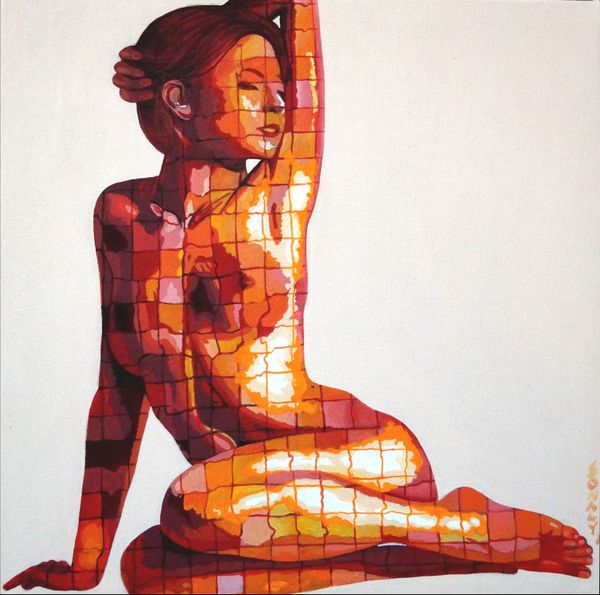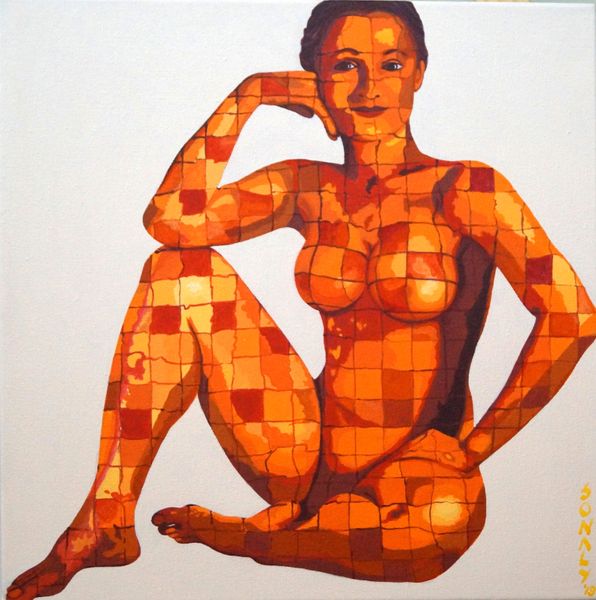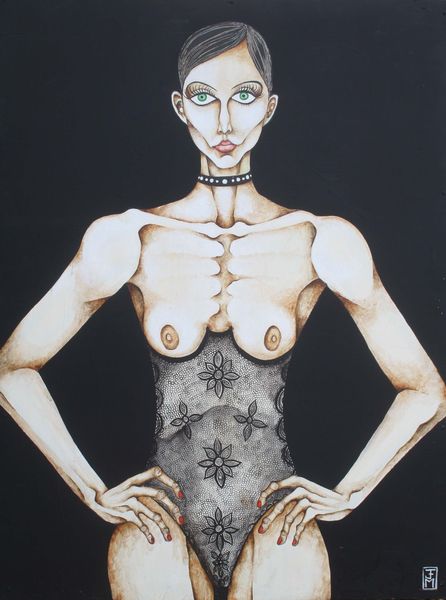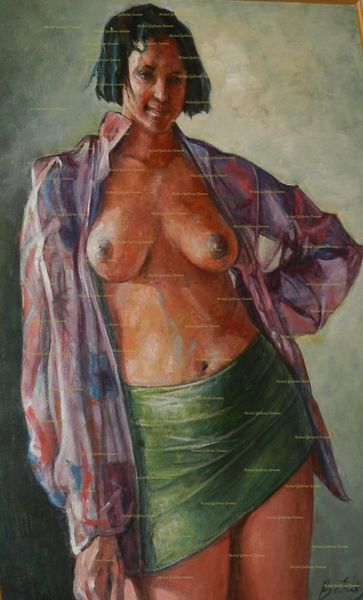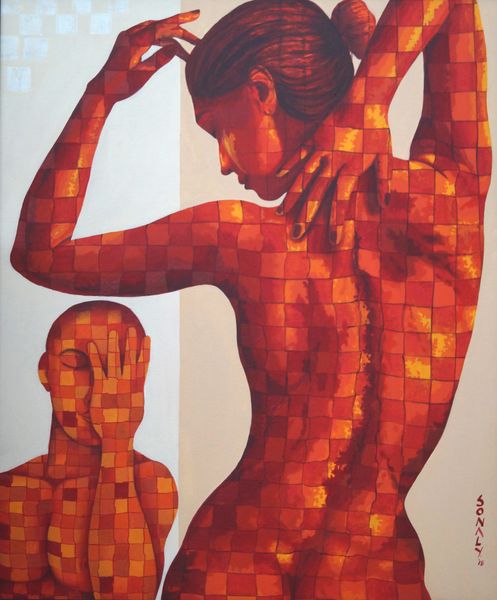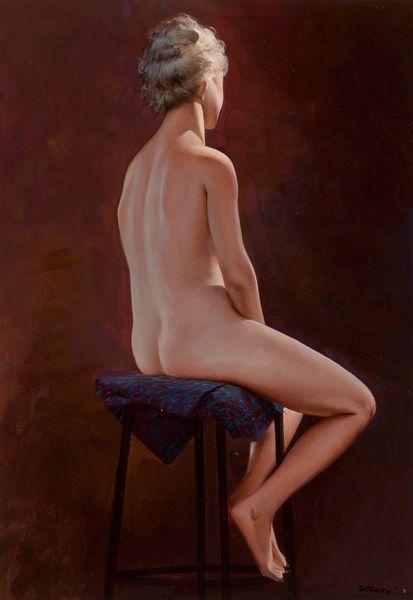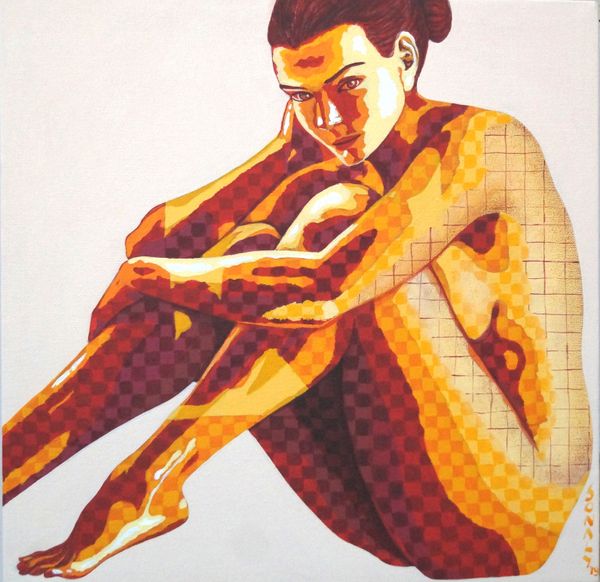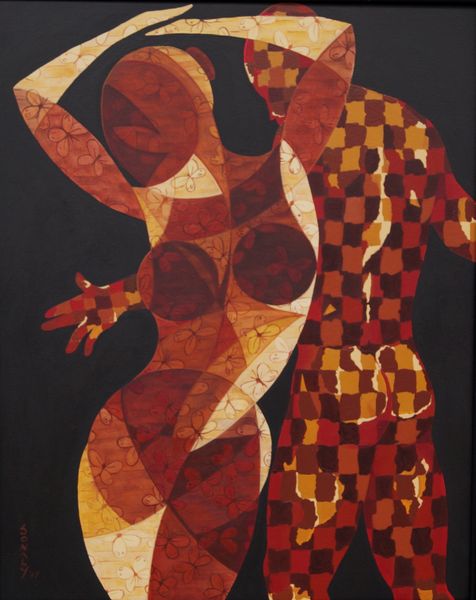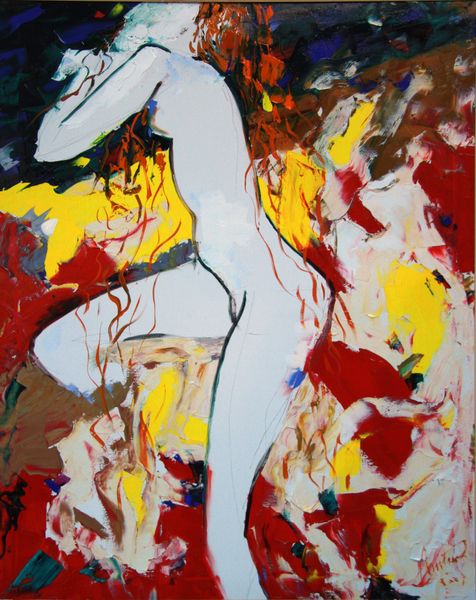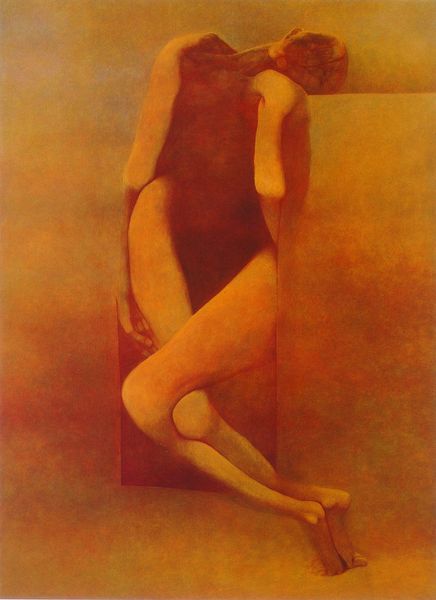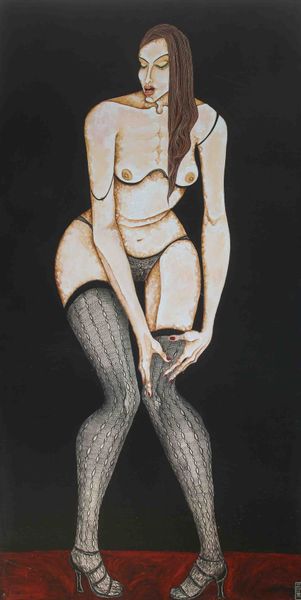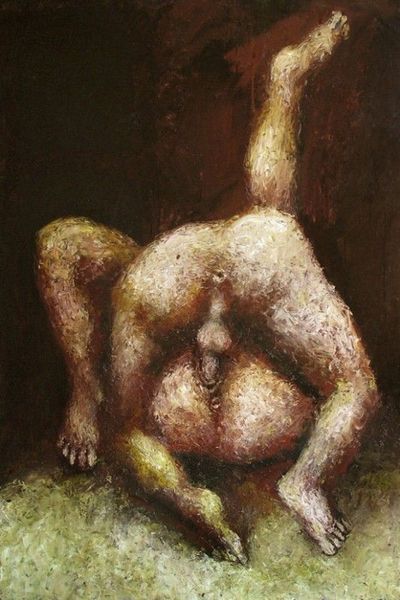
painting, acrylic-paint
#
painting
#
acrylic-paint
#
figuration
#
neo expressionist
#
acrylic on canvas
#
geometric
#
pop-art
#
nude
Copyright: © All content copyright Sonaly Gandhi
Curator: What immediately strikes me about Sonaly Gandhi's "Aeny" is this sensation of… vulnerability rendered as pattern. Almost as if the artist is both revealing and concealing at the same time. Editor: Indeed. "Aeny" presents a nude figure articulated through a geometric grid of red, white, and black squares— executed in acrylic paint on canvas. The pop-art-like stylization against the vulnerable subject opens up interesting possibilities. It invites us to consider the historical context of representing the female body, and how that representation has evolved through various social and political climates. Curator: Yes, absolutely. There is something intrinsically unsettling but also playful about seeing the organic form broken up like this. It subverts traditional portraiture expectations. Are we seeing a body, or are we seeing the idea of a body reduced to shapes? The silver chain adds to the curious effect, as does her averted gaze. There's no attempt at direct confrontation, just…quiet contemplation. Editor: It feels like Gandhi is perhaps alluding to how societal structures or external perspectives can fragment our own sense of self. The geometric pattern becomes a metaphor, then. I’m drawn to how the piece sits outside of any specific period; that deliberate rejection of timeline allows "Aeny" to function almost as an intervention within contemporary discussions around identity and representation. Curator: Beautifully said. It has that timeless quality, which transcends easy categorization. In essence, Gandhi provides us not only an image but a field of introspection. We get a fragmented reflection, in her checkered pattern, back to ourselves. Editor: It highlights how images, even the most seemingly straightforward, always carry a cultural and historical weight. Gandhi’s “Aeny” leaves one ruminating long after the initial viewing, as you said, almost reflecting our own societal imprints and aesthetic biases back onto us.
Comments
No comments
Be the first to comment and join the conversation on the ultimate creative platform.
